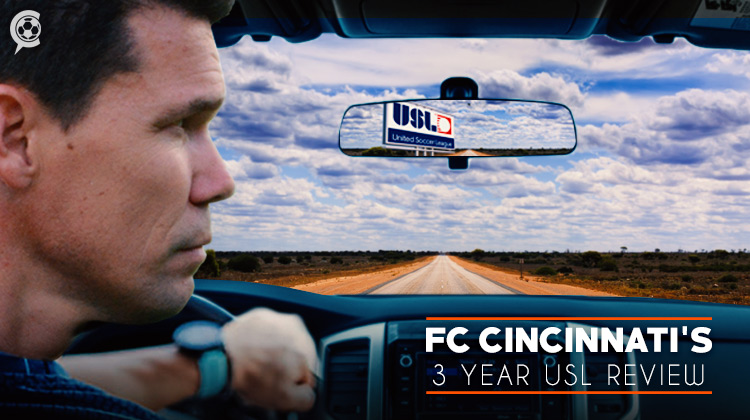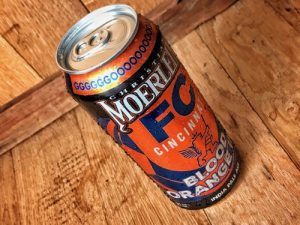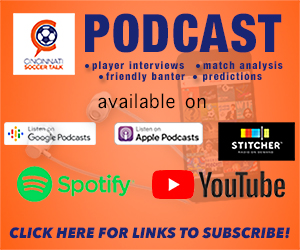
This three-part series is a look back on FC Cincinnati’s short stint in the USL. Was it a success? If so, in what ways and in what areas could it have gone better? Part one covered FC Cincinnati’s on the field success. Part two takes a look at FC Cincinnati off the pitch, and Part three will be a outsiders’ perspective from other writers around the USL.
Previously in part one, we reflected on the mixed success of FC Cincinnati, but let’s look back on everything FCC did off the field. The beautiful game and its diehard spectators are the basic components of the business, but sports are not that simple. Majority owner Carl Lindner III and partners purchased a USL franchise from the Dayton Dutch Lions in 2016. Upon making that purchase, a goal was stated. The goal was to build a club and get into MLS in five years. Every business decision made would contribute to achieving this ultimate goal, and only the correct decisions would make the end achievement possible. In this area, FC Cincinnati did not only find success, it far exceeded what anyone thought was possible in lower division soccer.
In The Beginning
Out of the gate, FCC was met with skepticism. A new United States Soccer Federation Division III team was launching in a soccer graveyard. Teams had come and gone, and the most current iteration was the Cincinnati Saints. While that team had several diehard fans, the general public was largely unaware of their existence, and the arrival of FCC pushed them into a move. Critics claimed that the market couldn’t support amateur soccer, let alone an attempt at making it professional. Some cities had teams born from fan movements, Cincy did not. What Cincinnati had was a group of people who didn’t know a whole lot about soccer, but they had the passion to learn and succeed. Criticism flooded the web as Cincy launched promotion videos and their logo. Why was the FC so big? Does there need to be that many soccer balls? Chalk man? Soccer fans use smoke.
What happened online vs. what was happening locally were two different worlds. While people were laughing and dooming FC Cincinnati on Twitter, locally, peoples’ ears were perking up. One name brought local legitimacy, and that name was being passed around. Lindner and family have a Cincinnati legacy. That name provides jobs, trust, charity and stability in the region. This was not a run-of-the-mill soccer team; it was going to be a professional sport. Lindner used his connections and locked down Nippert Stadium. Many thought it was too big, but Lindner saw the Bengals’ first home. With the mix of stadium selection, ticket pricing, local promotions and community engagement, FCC treated lower division soccer like MLS. People took notice, and on a cold, wet opening day, 14,658 fans showed up to check out the new project.
Authenticity
Unlike most USL launches, FC Cincinnati decided to go big. They wanted 10,000 people at a match and picked an oversized stadium. FCC’s front office told the league they could sell over $600,000 in merchandise, which got a nice chuckle. The USL might have believed club president and general manager Jeff Berding had set too high of goals, but the local team saw it as a starting point. Berding had been in the Bengals front office for 16 years. He knew how to attract attention and what advertising points to hit. The name of the owner brought the stability. Lindner as an owner immediately showed Cincy that this was not another soccer project. FCC was the real deal.
Exceeding Expectations
Nothing succeeds like success. When over 14,000 showed up to Nippert, people took notice. The front office was quick to capitalize on the added press and pushed for bigger and better events. The team started massive promotions and even booked Crystal Palace of the English Premier League. Billboards around town encouraged people to games, but the No. 1 reason for growth was word of mouth from fans. Berding and his staff did their part by making a professional matchday environment. Fans took it from there. Supporter groups, who had formed at the team’s launching, hit the ground running. The Bailey was pumping excitement throughout the stadium, and fans were buzzing. These fans came back and brought new people with them every time they did.
Goals Hit, Step Up The Goals
FCC was pretty good on the pitch in Year One. Off the pitch, it was stepping up its plans. Ten thousand fans a game was no longer acceptable. FCC wanted that many season ticket holders and at least 15,000 or more in the stands. It would go on to average over 17,000 in Year Two. In Year Three, it moved the posts again and averaged over 25,000. Merchandise and community events also grew. FC Cincinnati continued hiring and improving their front office. FCC quickly outgrew its peers in size and scale. Players around the league took notice, and FCC’s off-the-field success even made things like player recruiting easier.
Partnerships
FCC’s ability to take advantage of key partnerships gave them an advantage. The front office did not try to control every aspect of matchday. They realized fans create part of the experience and left room for fans to do so. The first supporter council in the USL was created so fans from all backgrounds could advise the team from a diverse perspective. Merchandise partnerships with local apparel companies were a hit. Fans got more creative options for gear, and the team’s brand spread like wildfire across the city.

FCC’s off the field success is unparalleled in USL history. After some early marketing mistakes, the club hit home run after home run. FC Cincinnati’s true success comes from the balance it achieved when growing a club. It spent the money and established the infrastructure for success but also left room for organic growth and fan support. Too much one way or the other, and it could have been a different story.












